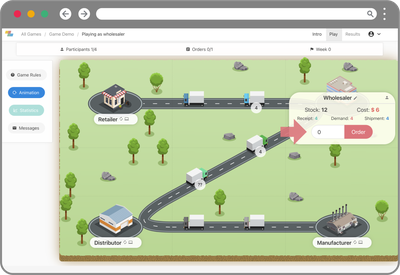What is Demand Forecasting?
Demand Forecasting, also known as Demand Planning, is the process of estimating the future needs of a company’s customers. It is performed by Sales, Marketing or Supply Chain department employees, who are often designated “Demand Planners”. The generated forecast is an input for other functions in the company, allowing the planning of resource utilization, production, raw material orders, revenue forecasting and strategic decision making.
Both qualitative and quantitative information are leveraged to forecast future demand:
Qualitative information includes expert opinions, market research and surveys.
Quantitative analysis calculates future demand based on data, such as historical sales or market evolutions, and is usually processed using formulas or algorithms.
Why is Demand Forecasting critical in manufacturing?
In every company, most activity and operations do not occur instantaneously, but require proper planning. Recruiting an employee—for example—and training them for a specific job may take several months. Opening a new factory, developing a new product range, or ordering raw materials from external suppliers may take a few months or even years. To be able to make decisions today, businesses rely on the ability to make assumptions about the future.
Here are some examples of types of forecasting:
Operational:
How many employees should be hired in order to serve customers the following Christmas?
How many raw materials and components should be ordered in order to produce a finished good?
Strategic:
Would it be worth it to invest in a new production line, and what will be the impact on the financial results of my company in the coming years?
Should we develop and launch a new product range?
And because forecasts are always estimates, companies usually need to incorporate types of buffers or “safety margins”, such as having slightly more employees than needed or more stock in inventory.
Simulate Demand Forecasting examples with your team or students!
Easily and quickly explore and explain Demand Forecasting concepts through this interactive and funny Supply Chain simulation!


Increasing the quality and the accuracy of the forecast, as well as frequently updating them, improves the operations later on, and also decreases the number of buffers needed to compensate for the risk. This is why many companies launch Sales and Operations Planning projects or acquire software to help with forecasting.
How can Zensimu help optimize Demand Forecasting?
By playing Zensimu’s Beer Game, participants can see very practically how implementing collaborative and frequent forecasting can tremendously impact the bottom line.
How Beer Game works?

Organizing multiple rounds of the simulation can reveal more and more benefits to having optimal Demand Forecasting. For example, a first round of Beer Game may be set so that the final consumer demand is unknown and there is no collaboration occurring within the supply chain. In this simulation, players often generate a high volume of stock resulting in high storage costs.
A subsequent round can provide some clues about future demand with more collaboration and information-sharing between Sales, Marketing or Finance departments, and reveal dramatically improved results.
Developing a culture of collaboration and information-sharing inside a company isn’t easy, so laying everything out in a fun and enriching gaming experience should greatly help!
Explore the Demand Forecasting principles with your team or students in this immersive Beer Game Simulation
Easily and quickly explore and explain Demand Forecasting concepts through this interactive and funny Supply Chain simulation!

